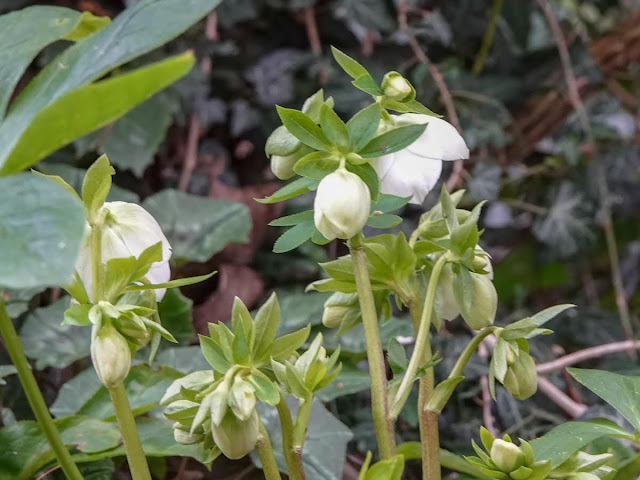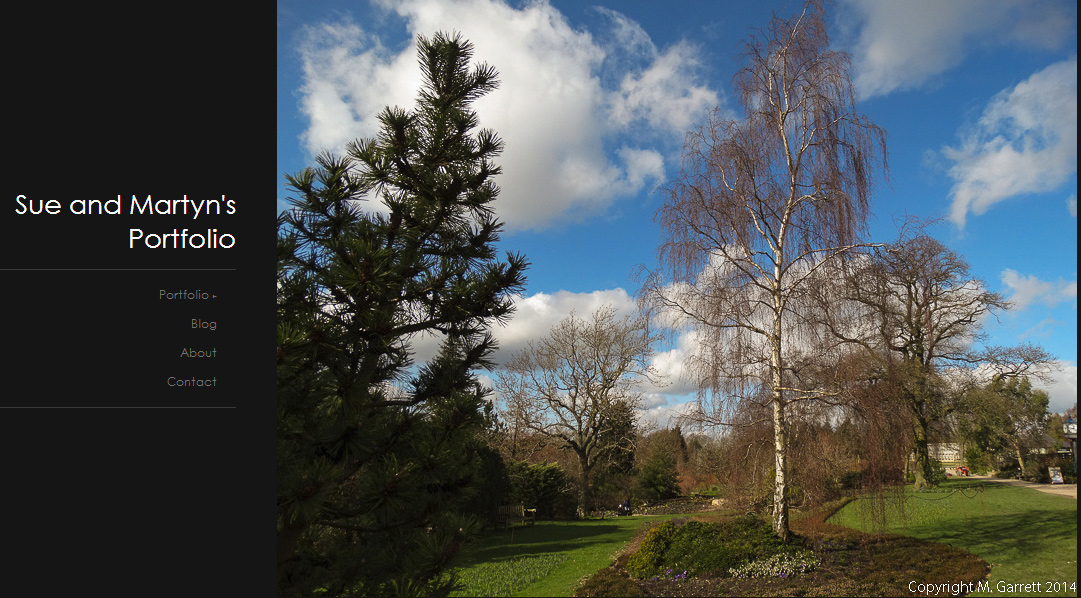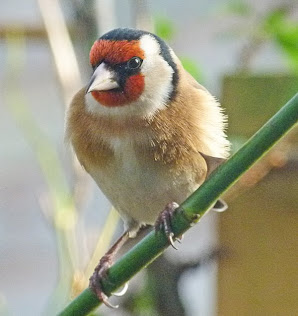It's amazing just how many plants growing in our garden and on the plot have just arrived without any action on my part.
According to the adage that 'a weed is a plant growing in the wrong place', I guess many of these plants could be classed as weeds.
Verbena bonariensis is an exceptionally prolific self seeder in both our garden and on the plot.
The clump below is growing up against our front window where there is no soil at all. It's growing in gaps between the paving bricks but what is more surprising is that the bricks are bedded onto concrete.
Seedlings spring up in gaps in the bricks on the drive too and most are truly weeds and have to be removed. On the plot verbena also self seeds at will.
Several years ago we planted some antirrhinums which if I remember rightly didn't really do very well, however each year new plants pop up in the front garden and on the plot. Again they will grow between gaps in the paving stones.
We never know what colours will emerge.
When we first planted up the bed of hellebores the plants were well spaced but again they are a plant that seems to seed freely.
This area is now thickly carpeted with plants.
Another prolific self seeder is the aquilegia. Somehow a colony of white aquilegias have established themselves under our trachycarpus. Surprising on two counts. Firstly we have never grown a white variety and two, we had never grown aquilegias anywhere near this area before this lot sprung up.
Aquilegias have also popped up on the plot in the pear tree bed. I think seeds may have been transferred from the garden with old compost. Various other shapes and colours are now growing in other areas of the garden.
It isn't only herbaceous plants that pop up unannounced. The daphne above appeared over nine years ago. I suspected the the seedling was different when I first saw it but it wasn't until 2009 when it first flowered that it was identified as a daphne. No doubt a bird had been sitting on the arch, above where it is now growing, had deposited a seed. It was lucky that I didn't whip it out when weeding as I recently noticed that plants only 25cm high are selling for £14 or more.
We have a row of buddleias on the plot and it will come as no surprise to anyone that has noticed buddleias springing up in the most inhospitable of places that they self seed. Last year we spotted at least five plants that had managed to establish themselves in areas that were uncultivated last year.
The shrubs below were lifted and some will end up in my sister's garden and the others hopefully will find a home elsewhere.
Growing alongside the buddleia in the photo above right was a lovely borage plant. The only time that we have grown borage was on a part of the plot nowhere near where this plant appeared.
On the plot, the bed where our pear trees are planted houses a multitude of self sown plants. The dominant species is candytuft, but also popping up are calendula, eschscholtzia, hardy cyclamen, foxgloves, aquilegias, and probably quite a few other plants that I have forgotten about until they reappear next year.

Cyclamen hederifolium appears all over the garden, often in tiny crevices. We originally had one pink and one white plant. Now we have a countless number in white and various shades of pink. The seeds are supposedly spread by ants. If you like long unpronounceable words, this ant activity is called myrmecochory. All I can say is that the ants have been very busy. I think we may have helped things along a little as I am sure ants can't be responsible for transporting seeds from the garden to the plot.
Although self sown cyclamen verge on the point of weed status they don't usually cause a problem. There are, however, some self sown plants that really can become quite a nuisance and choke other more desirable plants.
In the garden, chief amongst these is the innocent looking violet. In the dim and distant past we planted one Bowles Black violet. This plant has produced generations of offspring. As in the case of the cyclamen, ants are involved in the spreading of violet seeds. Violet seedlings cause problems by growing in amongst other plants including in tubs and prove very difficult to evict.

Another plant that I would place in the weed category is limnanthes or the poached egg plant. When we first sowed seeds of this annual only six plants resulted. These went on to produce carpets of plants in the rose border on the plot. As the bed became overgrown the poached egg plants disappeared. Then after the border was renovated this year the seeds have once more sprung into action. They will now need controlling before they take over again.
Another unlikely nuisance is cerinthe. Whole swathes of self sown plants pop up and last year they killed some sweet rocket plants that were sown the previous year. The sweet rocket were growing well until a mass of cerinthe sprung up in the middle of the row.
Foxgloves pop up in the garden and on the plot and again are left when they decide to grow in convenient places. The flowers are all sorts of colours. The white one at the bottom right of the collage above appeared in the red and yellow border but I couldn't bring myself to evict it.
The same strategy is used for the annual poppies that spring up all over the plot and in the front garden. As with the foxgloves, we sowed a packet of the double pink variety many years ago and since then have never been without. Some single poppies in a variety of colours and the small yellow poppies which I think are Welsh poppies have arrived from elsewhere.
I have often tried growing both native and cultivated primroses from bought seed with very limited success. I once managed to germinate six native primrose seedlings. These fortunately included both thrum and pin headed varieties and went on to produce seeds. I collected some and sowed immediately and achieved a good success rate but since then they have managed to procreate themselves. Any growing in the grass where they may meet an unfortunate end are transplanted to a safer location.
A couple of years ago I bought four cultivated primroses for a tub in the garden and they too self seeded generously and produced mature flowering plants. You should be able to spot the baby plants in the photo on the top right of the collage. Strangely the new plants are mainly blue flowered if anything I would have expected them to revert to yellow.
 |
| Add caption |
Then their are the little violas that sometimes pop up in the most unexpected places
This one appeared on the plot at the foot of a newly planted black raspberry.
To sum up, all weeds are not equal, some are more welcome than others.



















































































